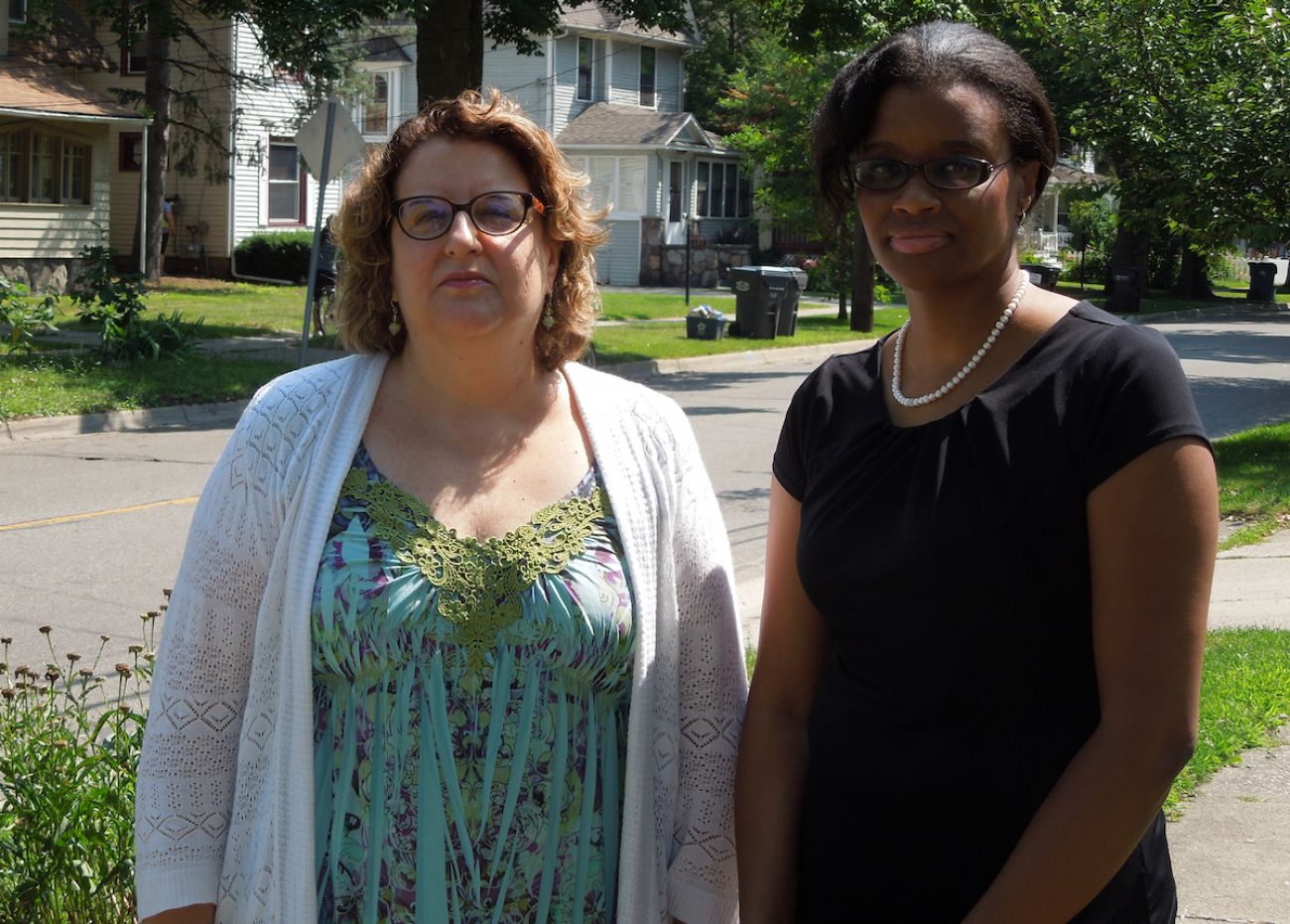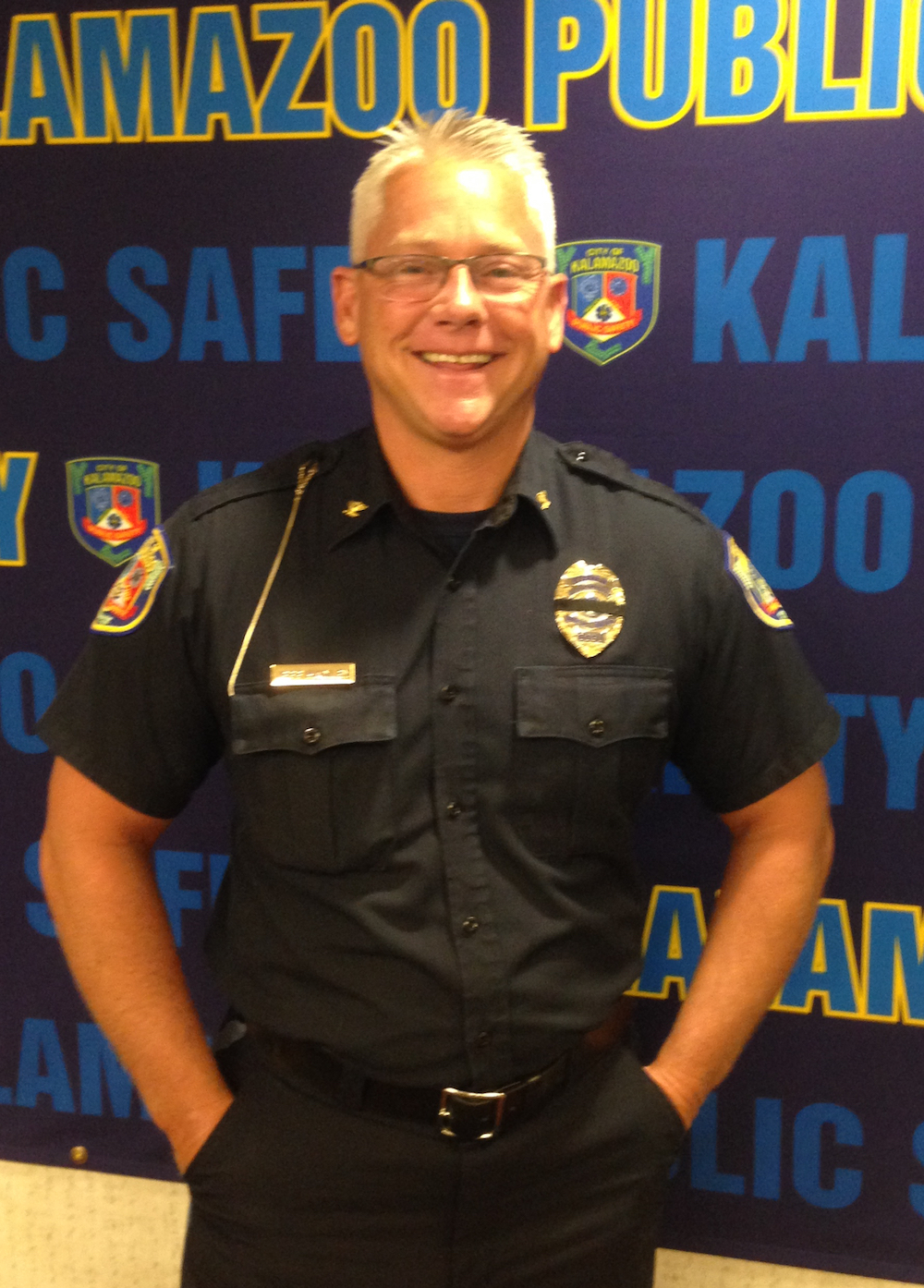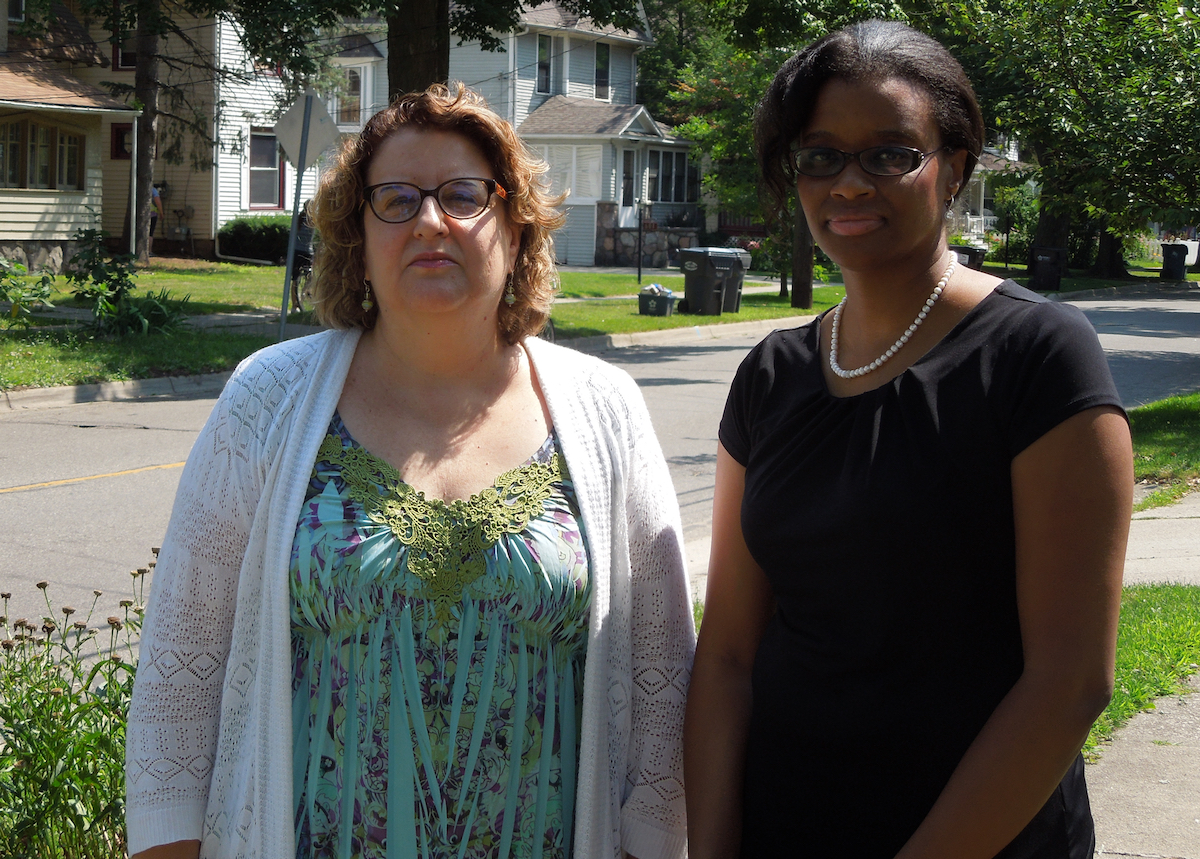Amid guns and violence and police shootings, a program that works

KALAMAZOO - It was Memorial Day 2014 when Michael Day was killed by a shotgun blast to his chest as part of a gang feud.
He was 13.
One of the group of young people who shot him was 15.
For two years before Michael’s death, Kalamazoo leaders had fought to get a youth violence prevention program started in the city, with no luck. The boy’s murder was a turning point, galvanizing the community to recognize that something had to be done.
That something took another two years.
The story of Kalamazoo’s efforts to implement the Boston-based anti-violence program known as Operation Ceasefire is one that likely will be repeated across the country, as cities struggle to address recent episodes of violence and strained relations between police and the communities they serve, all while dealing with tighter budgets and smaller police forces.
“As a chief, I’m trying to meet the expectations of the community, and I need human and financial capacity to do these things. I think that gets lost in this discussion,” said Kalamazoo Police Chief Jeff Hadley. “I truly believe this program will make a difference.”
Operation Ceasefire is 20 years old this year, the brainchild of criminologist David Kennedy and first implemented in Boston, where it has been credited with “significant” reductions in homicides and gun-related assaults.
In the intervening years, versions of the program – which addresses gun violence by identifying perpetrators, often gang leaders, and presenting them with consequential choices to stop – have had similar results in other cities, including Detroit. But a plan to try it in Kalamazoo took two years just to raise the $300,000 needed to get it off the ground. Hadley, the police chief, said he hopes to have it operational within a few months.
In this chaotic summer, at a time when policymakers in Michigan and across the nation seem ever more dug in on issues to address violence – gun control, anyone? – iterations of Operation Ceasefire offer promising results for leaders across the political spectrum.
But in places like Kalamazoo, leaders often struggle for funding amid tighter-than-ever municipal budgets. And even when they get going, the program requires focused, sustained attention from those participating, a reminder that complicated problems do not often have easy solutions.
“I believe it’s legitimate and can work,” said Saul Green, a former U.S. Attorney for the Eastern District of Michigan and deputy mayor of Detroit who ran the city’s Ceasefire program, which was limited to two small areas on Detroit’s east side.
“People need to understand is that there are a lot of moving parts, and if you’re going to take it on, you better have the resources, have the commitment from all entities that have to be involved.”
Here’s how it works: Police identify “street groups” (the word “gang” is discouraged, because most are not formal gangs) they believe are involved in violent criminal activity. Representatives are invited to a meeting, where they meet police, social-service agency staff, faith community members and residents of the neighborhoods where the groups are operating.
All deliver the same message: “This is not to be tolerated,” Hadley said. “But we’re going to get you help.”
What help looks like
Help comes in the form of a team of social-service specialists, mostly. Do the targeted criminals want job training? Schooling? Drug treatment? All stand ready to start helping immediately.
Then come the consequences: Group members are warned that if one member fails to fall in line, police will target the entire group for increased attention.
“We’ll arrest you for dope, all kinds of stuff,” Hadley said. Many members of these groups have criminal records, and may be on parole or probation already. Any violation can send them back to prison, so this gets their attention. But just as important, “they can save face with their peer group,” Hadley said. If they don’t want to appear weak by changing behavior under threat of police action, they can tell themselves they’re doing so for the good of their friends.
The final act of the meeting comes from the community, when family members and others who have been directly affected by gun violence speak directly the people carrying out the violence, describing their pain and the effects the shootings have had on their neighborhood.
“We’ll bring in mothers of victims and mothers of incarcerated,” said Wendy Flora, of the Interfaith Strategy for Advocacy & Action in the Community (ISAAC), a Kalamazoo organization instrumental in the youth anti-violence effort. “They may not listen to police, but they will listen to mothers.”
Operation Ceasefire is one of a collection of strategies from the National Network for Safe Communities at John Jay College in New York City, also run by Kennedy.
The network claims impressive statistics, with some qualifications. Boston saw a 63 percent reduction in youth homicide, Cincinnati a 41 percent reduction in group member-involved homicides, and in Chicago, a 23 percent reduction in “overall shooting behavior” among those groups who met with police.
The Ceasefire program is not a cure-all. It won’t reduce domestic violence, or necessarily stop shooting by, or of, police. But, Hadley said, it has a positive effect on reducing gun violence among young people, and on police-community relations in general. Officers support it, and it gives young people on the street a different view of police; not just as adversaries, but as partners in potentially turning around a dangerous lifestyle.
Hadley said the events of the past month – the police shootings of African-American men in Baton Rouge and suburban St. Paul, and the killing of police officers in Dallas and Baton Rouge – illustrate the need for programs like Ceasefire.
“You need to hire the expertise to train your people, and you need enough staff,” he said. “If you’re already running on thin staff working 8-10 hours shifts, and they’re running from call to call, at what point do you expect them to have human contact with the community?”
That is a very real problem in Michigan, with Bridge Magazine reporting in May that municipal police forces have been decimated by budget cuts, with 2,300 fewer municipal officers than just a decade ago.
Bridge Magazine database: How many cops has your town lost?
“I’ve cut 40 officers in eight years,” Hadley said. “That’s almost 100,000 hours of work a year. That’s 100,000 hours of police work we don’t have any more. Think how much more work you could do with 40 more officers. You’re hanging on by a shoestring.”
That makes a program like Ceasefire, which helps build relationships between police and the community, even more important, said Charlae Davis, executive director of ISAAC, the anti-violence group.
“Whatever happens nationwide trickles down to Kalamazoo,” Davis said. “And when you have relationships (between community members, police and social service leaders), you’re able to get through a crisis together. You need to build legitimacy and trust.”
But just getting the program started has been a multi-year struggle.
“It’s been frustrating because we think it’s a no-brainer,” said ISAAC’s Flora. “It’s reduced violence in other cities, but in Kalamazoo, people think it’s a lot of money and they don’t see the benefit.”
The cash-strapped city of 75,000 didn’t initially have money for the program in its budget. The city applied for grants, which it didn’t receive, before finally finding help from two local entities, the Kalamazoo Foundation and the Irving S. Gilmore Foundation, which donated the $300,000 needed to get the program funded over three years. Both foundations are dedicated to improving life in Kalamazoo, particularly for younger people.
Sustainability is also a concern. Coordination of efforts across not only law-enforcement agencies (more than one may be involved, depending on the city), but social-service agencies, educators and neighborhood residents can be a daunting task.
“People need to understand is that there are a lot of moving parts, and if you’re going to take it on, you better have the resources, have the commitment from all entities that have to be involved,” said Green, of his experience running the program in Detroit. “You’re making a promise that if (perpetrators) choose help, help will be provided. You have to keep your promises if you’re going to change behavior.”
In Detroit, Green said, the program had a positive impact in one area where it was tried, less so in another. But it was tried on a small scale in a sprawling city, and never rolled out city-wide. The impact may be greater in a place like Kalamazoo.
“You’re making a promise that if (perpetrators) choose help, help will be provided. You have to keep your promises if you’re going to change behavior.” – Saul Green, former director of Ceasefire Detroit
“I truly believe it will make a difference,” said Hadley. “We’re police, we’re going to go out and make arrests and write tickets but that’s not how we’re going to measure our success. But no one cares about that. What the community cares about is whether they trust you. (Ceasefire) will help maintain the relationship with the community. To me, that’s one of the outcomes we rarely put a lot of value on.”
New tactics for new realities
Programs like Ceasefire require a police force that is willing to understand the myriad social factors that influence behavior in impoverished, high-crime neighborhoods, the Kalamazoo chief said, and contemporary police training needs to address the issue.
“Look at the manner in which we’re training our police officers, and preparing them to serve,” Hadley said. “We’re pretty thin in communications skills, emotional intelligence, implicit bias training, etc. It’s leaving officers bankrupt. It’s absolutely critical, as critical as firearms training or pursuit driving.
“You have to arm, not literally, your new officers with all the tools they need to navigate our complex environments.”
Luther Keith, director of Arise Detroit, a coalition of grassroots community groups, said police and policymakers alike should remember that anti-violence programs “aren’t just (about telling young people) ‘don’t shoot.’ They’re academic, recreational,” anything that encourages young people susceptible to committing violence to channel their energy into positive activities and outcomes.
“They all give people somewhere to focus,” Keith said. “It’s all anti-violence.”
See what new members are saying about why they donated to Bridge Michigan:
- “In order for this information to be accurate and unbiased it must be underwritten by its readers, not by special interests.” - Larry S.
- “Not many other media sources report on the topics Bridge does.” - Susan B.
- “Your journalism is outstanding and rare these days.” - Mark S.
If you want to ensure the future of nonpartisan, nonprofit Michigan journalism, please become a member today. You, too, will be asked why you donated and maybe we'll feature your quote next time!


 Kalamazoo Police Chief Jeff Hadley is hopeful that a new program will reduce violence and build community relations. (Bridge photo by Ron French)
Kalamazoo Police Chief Jeff Hadley is hopeful that a new program will reduce violence and build community relations. (Bridge photo by Ron French) Wendy Flora, left, and Charlae Davis, of Interfaith Strategy for Advocacy & Action in the Community, have worked for years to reduce violence in Kalamazoo. (Bridge photo by Ron French)
Wendy Flora, left, and Charlae Davis, of Interfaith Strategy for Advocacy & Action in the Community, have worked for years to reduce violence in Kalamazoo. (Bridge photo by Ron French)